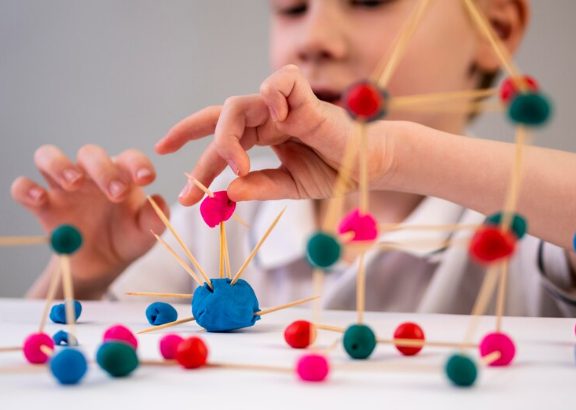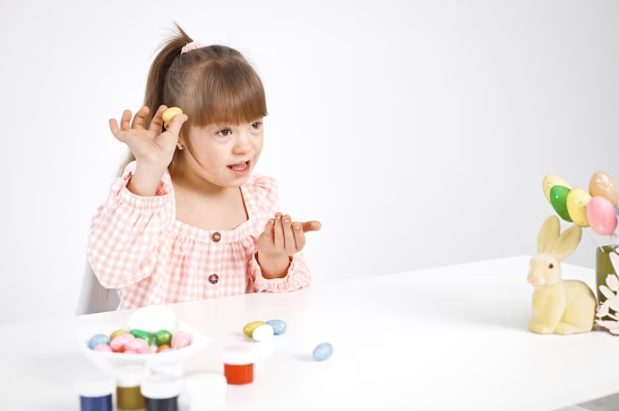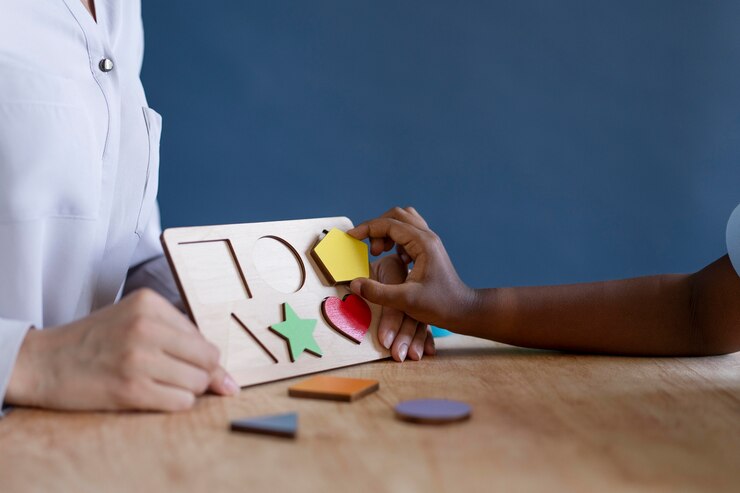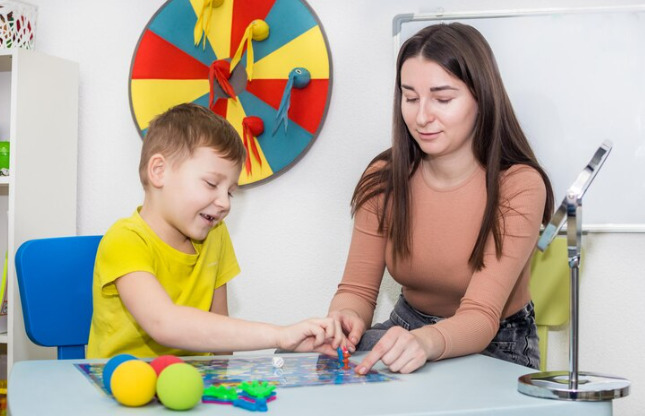
Speech and language therapy plays a crucial role in the holistic development of children with Autism Spectrum Disorder (ASD). It not only enhances overall communication but also improves social skills, enabling better adaptation to society and functioning in day-to-day life. Concerning the importance of early intervention for optimal outcomes, it is highly advisable to initiate therapy targeting speech and overall communication as soon as the diagnosis is made or a deficit is observed.
Speech and language therapy also addresses challenges related to language & communication, offering valuable support to children in improving both verbal and nonverbal aspects of their social communication – in essence, the primary objective of this evidence-based approach is to enhance the child’s ability to communicate in more practical and efficient ways.
Nurturing Voices: A Guide to Effective Speech & Language Therapy for Children with ASD
Many children with ASD face challenges in grasping the meaning and rhythm of words and sentences. Additionally, they may also struggle to comprehend body language and the nuances of various vocal tones. Collectively, these difficulties impact the capacity of children with ASD to engage with others, particularly within their own age group.
Tailored Approaches: No two children with ASD are the same, and that’s the beauty of their uniqueness. A good speech therapist, especially those at Early Autism Services, understands this implicitly. Expect a personalized approach that caters to your child’s specific needs and strengths and taps into their individual capabilities. Personalized therapy also ensures that your child’s journey is tailored just for them, which further instills a sense of comfort and security.
Communication Breakthroughs: Therapy focusing on the production of speech and overall increase in communication is a journey, not a sprint. Celebrate the small victories, whether it’s a new word, a sign, or improved eye contact. Each breakthrough is a testament to your child’s progress, and it is these little triumphs that pave the way for bigger accomplishments! Remember, the path to communication breakthroughs is unique for every child, and progress may unfold in surprising ways. For example, some children might even excel in non-verbal communication, such as gestures or visual aids, showcasing their distinct strengths. Embrace these diverse forms of expression, and trust that every step is a building block toward more significant strides.
Patience and Perseverance: As parents and caregivers of children on the spectrum, you already know and understand that some days may be more challenging than the others. Progress might seem slow, and frustrations can run high. But remember, each child blooms at their own pace. Trust the process, and be patient. It’s in these moments of perseverance that you’ll witness the resilience of your child and the power of effective therapy.
Embracing Technology: In a rapidly developing digital age, technology has become an invaluable tool in therapy. Interactive apps and games can make learning enjoyable and engaging for your child. These tech-savvy resources can offer diverse activities, from language development exercises to social interaction simulations, ensuring a well-rounded and dynamic approach to your child’s growth. Additionally, aim to stay involved in your child’s screen time, using it as an opportunity for bonding and shared exploration. Also, make the most of these tools and create an environment where learning is not just educational but a fun experience, too!
Family Involvement: Your participation and contribution is crucial. An adept therapist (trained in Verbal Behaviour and/or Speech Therapy) will not only work with your child but will also guide you on how to support their development at home. Incorporate those therapy techniques into your daily routine, and watch how ordinary moments turn into opportunities for growth. As you actively participate in your child’s therapy, remember that your love and encouragement are powerful catalysts, creating a nurturing environment where they feel supported, valued, and inspired to continue developing their communication skills.
In Closing –
At Early Autism Services (EAS), we have had the privilege of witnessing countless success stories where children, once presumed to be non-verbal, have found their voices through effective use of therapy focusing on increasing overall communication including speech. It’s stories like these that fuel our passion for what we do, and we’re confident that you, too, will experience the joy of your child’s developing communication skills.
So, get in touch with our autism care experts now or schedule a free consultation call at +91 8929153820. This way, we will be better equipped to address all your needs!






























Recent Comments